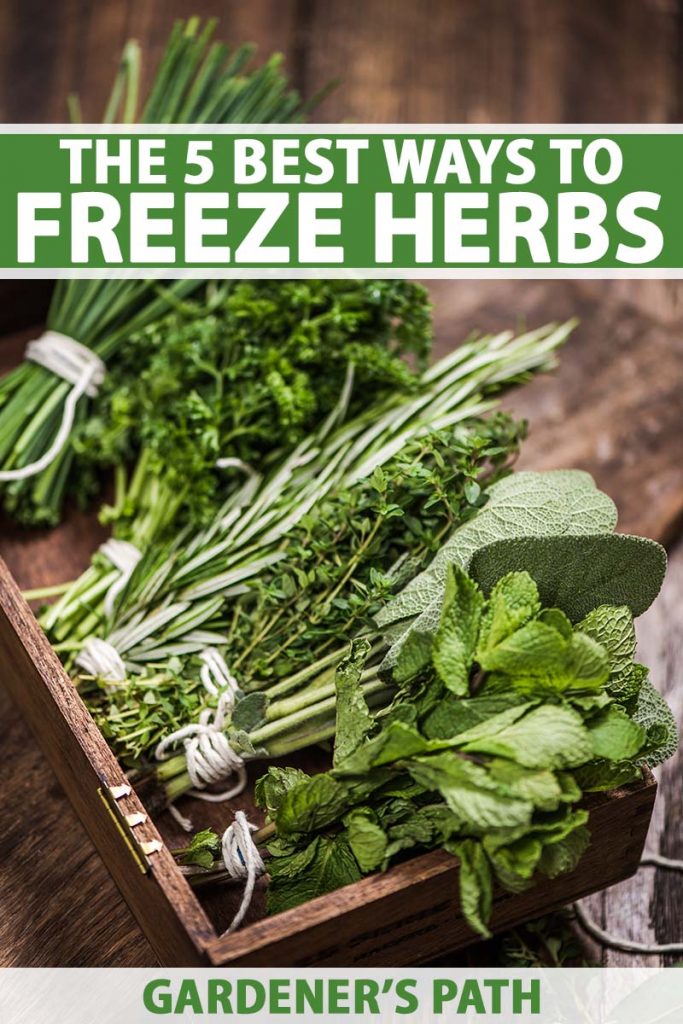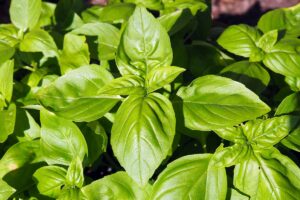The bright taste of fresh herbs is a pleasure that both cooks and gardeners alike enjoy. There’s nothing quite like their heady fragrance and zesty flavor to add flair to a recipe!
Sadly, at summer’s end, much of our fresh but frost-tender seasonings go dormant.
But those fantastic flavors don’t have to disappear from our plates until next year. You can still enjoy the rich flavor of garden-fresh herbs – straight from the freezer!
Whether you have a bountiful garden harvest or simply can’t finish a large batch you bought from the market, freezing is easy and efficient – and it’s a great way to reduce food waste.
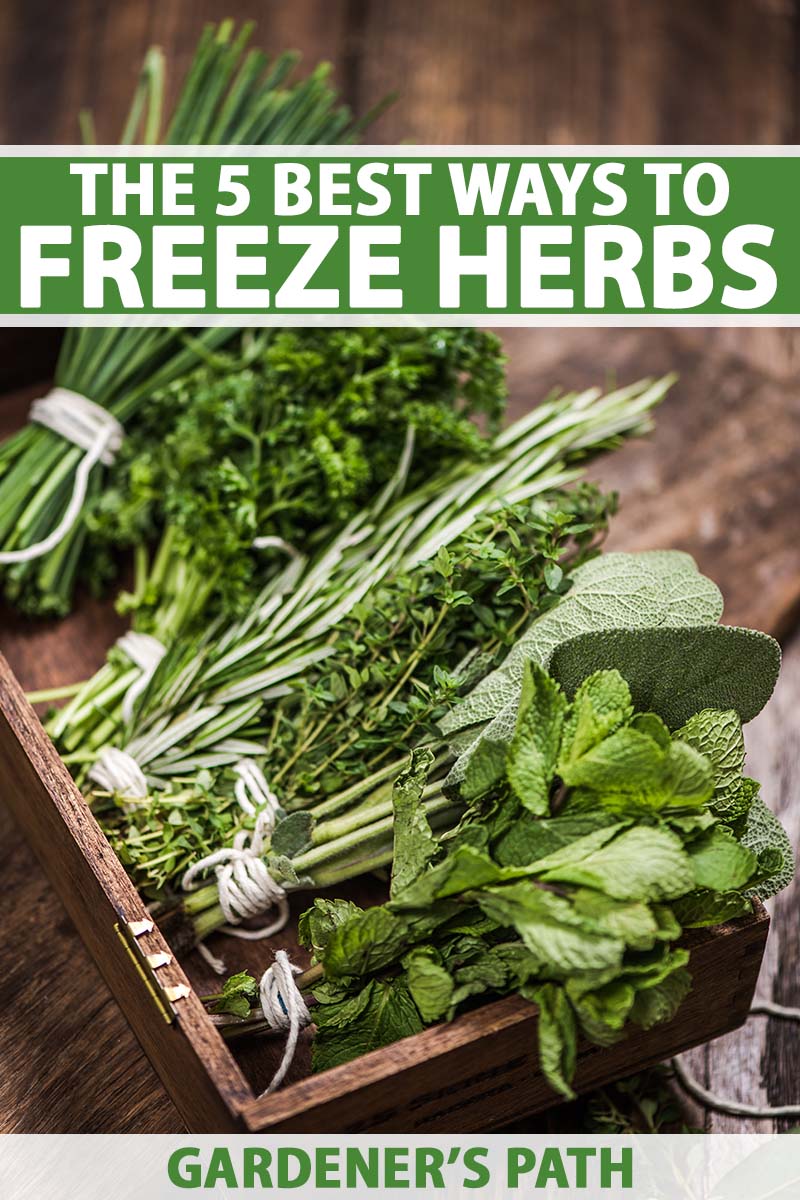
We link to vendors to help you find relevant products. If you buy from one of our links, we may earn a commission.
In fact, it often does a better job of preserving flavor than drying does.
If you’ve got an abundant harvest, try one or all five of the best ways to freeze herbs, and continue to enjoy those vivid flavors year round!
Here’s what I’ll cover:
What You’ll Learn
Benefits of Freezing
Freezing herbs is easy, economical, and it retains high levels of aroma and flavor.
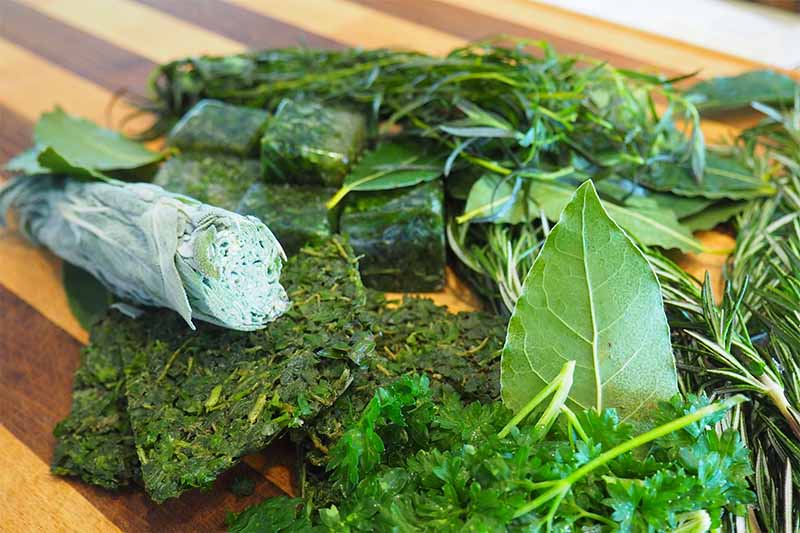
Drying, or dehydrating, is another popular preservation method.
Unfortunately, drying doesn’t always hold the flavors as we’d like, since a large amount of the essential oils responsible for that flavor are lost via this method.
As plant cells and fibers dry out, most of the oils are expelled and evaporate. But freezing preserves the essential oils that give these kitchen favorites their deep flavors, intense fragrances, and exceptional nutritional value.
When they are frozen, herbs don’t look as pretty as they do when they are fresh – the leaves darken, and can be limp when thawed. So you won’t want to use them as a garnish or in a fresh salad.
But with their lively aroma and taste, they make a delicious addition to baked goods, pasta, rice, sauces, smoothies, soups, stews, and more.
5 Easy Methods to Freeze Herbs
Most herbs can be picked at any time while they’re in season. But for maximum essential oil content and peak flavor, you should harvest just as flower buds start to form, but before they open.

Pick in the late morning, after the dew has evaporated and before the intense afternoon heat sets in.
Whichever method you use, after freezing in cubes, pans, or trays, you’ll need to transfer the individual pieces to airtight containers for storage. This helps to prevent freezer burn.
Frozen leaves are good to use in your cooking for up to 12 months – right in time for you to store another big batch at the end of next year’s harvest season!
Plus, they’re easy to incorporate into your cooking. Just pop a cube or frozen leaf into a pan of hot ingredients and stir – they melt and blend in quickly.
And unlike veggies, there’s no need to blanch first. Just wash and dry and they’re ready for the freezer.
Time Saving Tip: A salad spinner does a fantastic job of cleaning and drying herbs. You can wash, clean, and dry leaves all at once – and reduce paper towel waste!
If you’re new to this time-saving gadget, check out this guide to salad spinners over at our sister site, Foodal.
1. Bare Leaf
Freezing bare leaves is an easy way to preserve large-leaved varieties like basil, bay leaves, and parsley.
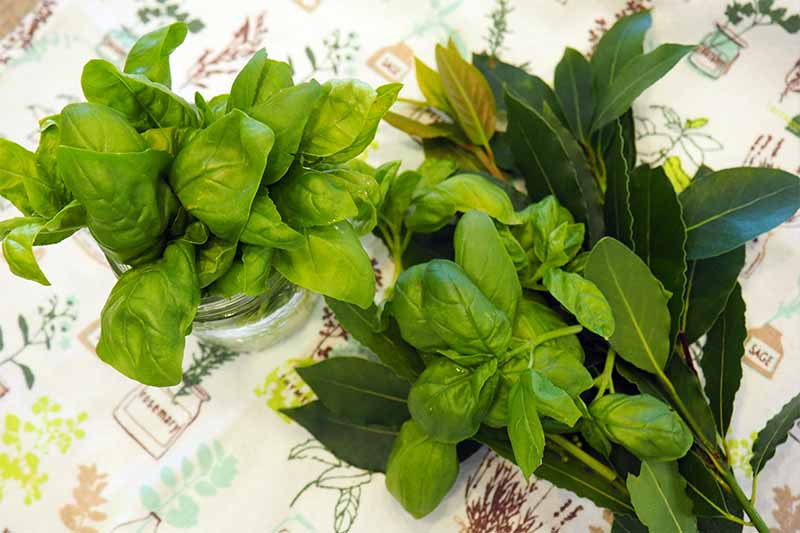
After washing and drying, strip the leaves from the stems and place them in a single layer on a baking sheet.
Lacy leaves like parsley and dill are an exception – leave them attached to their soft stems.

Place the pan in the freezer, and freeze for a few hours until solid, then transfer to sealable bags or airtight containers for storage. Be sure to label and date your bags and containers.
This method is good for keeping leaves separate, so you can remove individual ones as needed.
You can also simply pack bunches of individual leaves together in a resealable bag, press out all of the air, and freeze.
If you do it this way, you’ll have a solid clump of leaves that can be broken apart or cut as needed.
In Water
Freezing chopped herbs in water in ice cube trays is an ideal way to preserve tender leaves like basil, chives, cilantro, mint, and parsley.
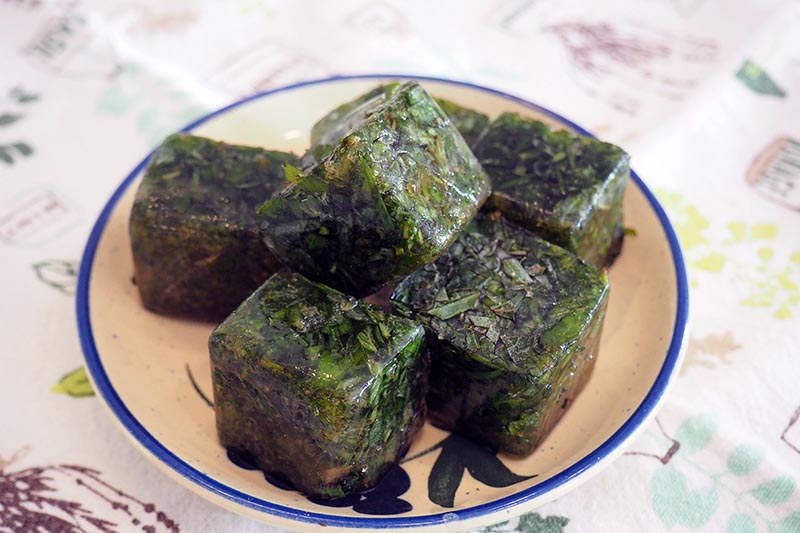
First, wash them well, and then chop or mince your tender leaf selection. You can choose to work with a single herb or use a mixture to create a blend of your favorite flavor combos.
For example, basil, parsley, and oregano is a versatile blend to add to any type of Mediterranean dish. Or a mint and tarragon combo is irresistible in cool treats like homemade ice cream!
You can use a chef’s knife to chop up small quantities, but for a larger harvest, a food processor is much quicker.
Spoon out portions of your minced herbs into the ice cube trays, and fill to a quarter inch from the top. Press lightly with your fingertips to level.
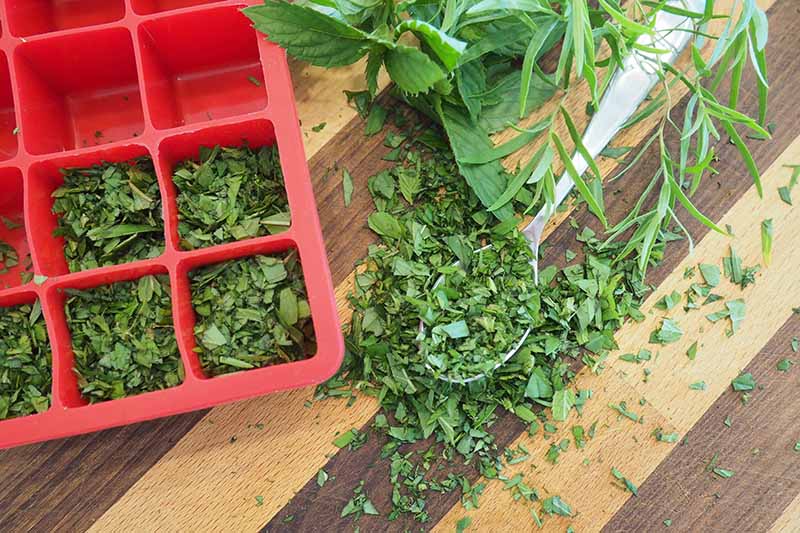
Alternatively, if you don’t want to use an ice cube tray, you can spread the minced herbs in a shallow pan, to create a “sheet” about one-quarter to one-half inch deep. Press down lightly.
Add water until the mixture is just covered.
Place in the freezer until solid, then pop the cubes out of the tray and transfer to long-term storage bags or containers.
Carefully cut sheets into quarters or other manageable sizes for storage. Label and date your storage containers.
If your spread isn’t releasing easily, you can run the bottom of the tray or pan under hot water for a couple of minutes to pop it loose.
When needed, take individual cubes out of the freezer or break pieces from sheets.
In Oil or Butter
Oil is an excellent medium to preserve a wide variety of herbs used for baking and cooking, including sage, thyme, and rosemary. And it’s also a suitable method for preserving individual herbs or a blend of your favorites.
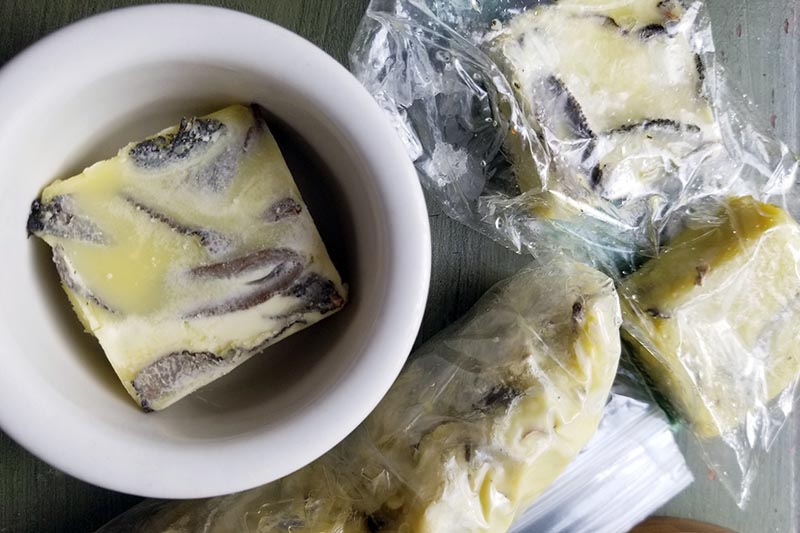
Whereas herbs stored in water may eventually develop ice crystals (and off-flavors if your freezer cycles through deep-freeze and warmer temperatures), oil helps to seal in and retain those essential oils without as much of a risk of freezer burn.
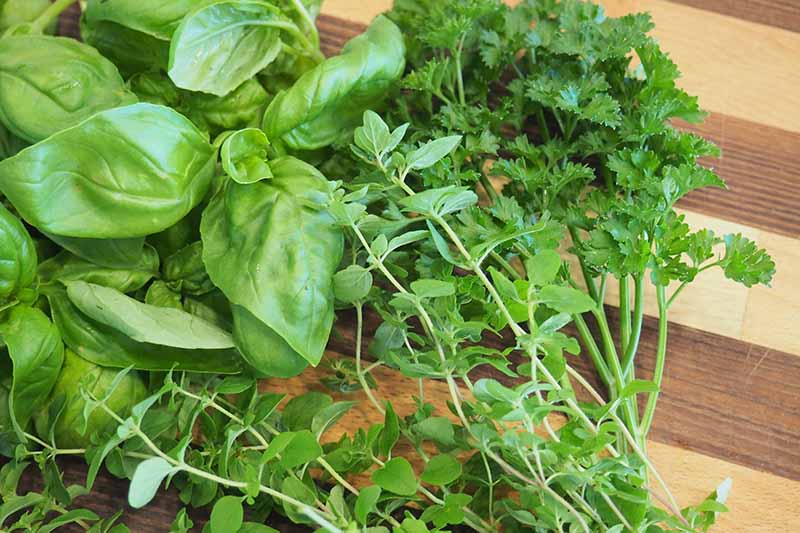
Wash well, then chop or mince the leaves. Portion them out into ice cube trays and press down lightly with your fingertips.
You can also layer into sheets one-quarter to one-half inch thick in a shallow pan, leveling with a spatula.
Add a high-quality vegetable oil such as olive oil, using just enough to barely cover the chopped herbs.
Alternatively, if you are using a food processor to chop your herbs, you can add one to two tablespoons of olive oil to make a light paste.
Portion the paste out into cubes or spread in pans and add a small drizzle of oil over the top before freezing – just enough to hold the mixture together when frozen.
Making a homemade pesto and then freezing works nicely as well. Find recipes on our sister site, Foodal.

Place in the freezer until solid, then remove and transfer the individual cubes to resealable storage bags or containers.
You can cut sheets into quarters or other manageable sizes before storing. Label and date containers.
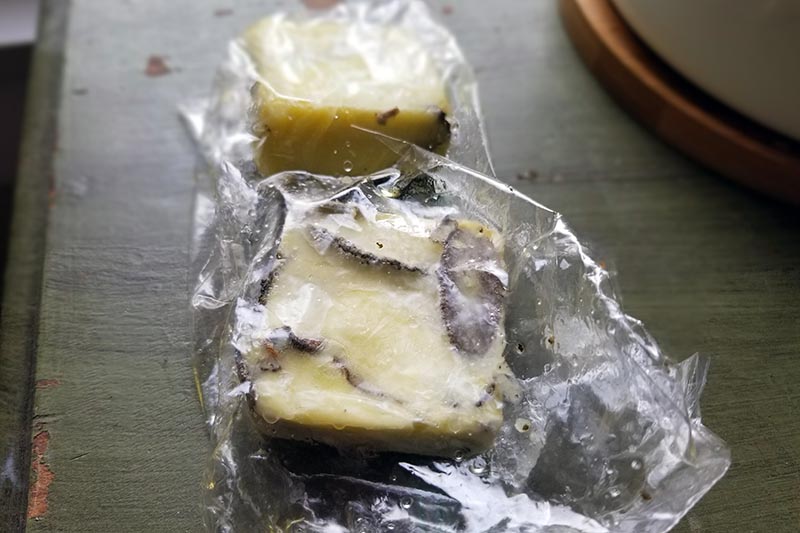
Remove individual cubes from the freezer or break pieces from sheets as needed.
You can make a compound butter and freeze it in portions in an ice cube tray, or other convenient container.
To make the butter, you’ll need softened unsalted butter, and the herbs of your choice.
For every eight tablespoons of butter, you can incorporate four tablespoons of your favorite herbs.
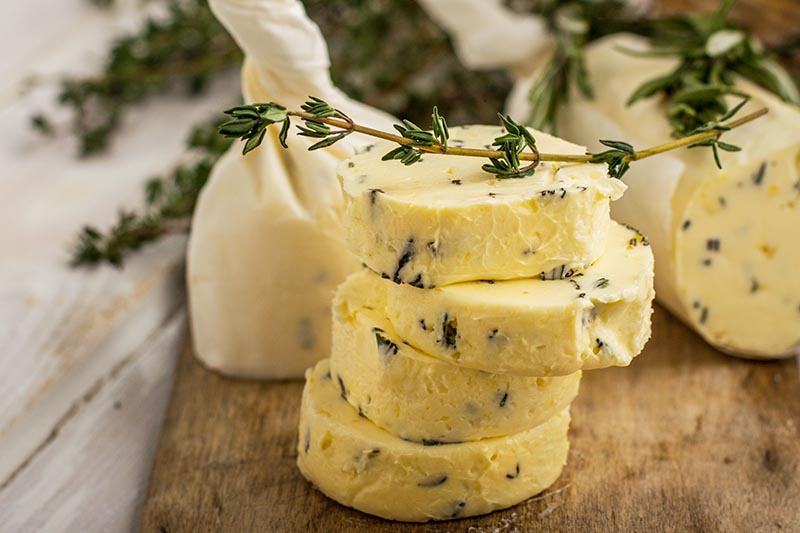
Wash and dry the herbs, and chop finely. Then incorporate the herbs through the butter with a fork. You can place portions of the compound butter on wax paper and freeze in an airtight container.
And then pull it out of the freezer and use it in this grilled lobster tails recipe on our sister site, Foodal.
Or up your steak frites game with herby deliciousness. Check out the recipe on Foodal.
On the Stem
Some herbs have small or very fine leaves, like dill, rosemary, tarragon, and thyme, and are easiest to handle when left on the stem.
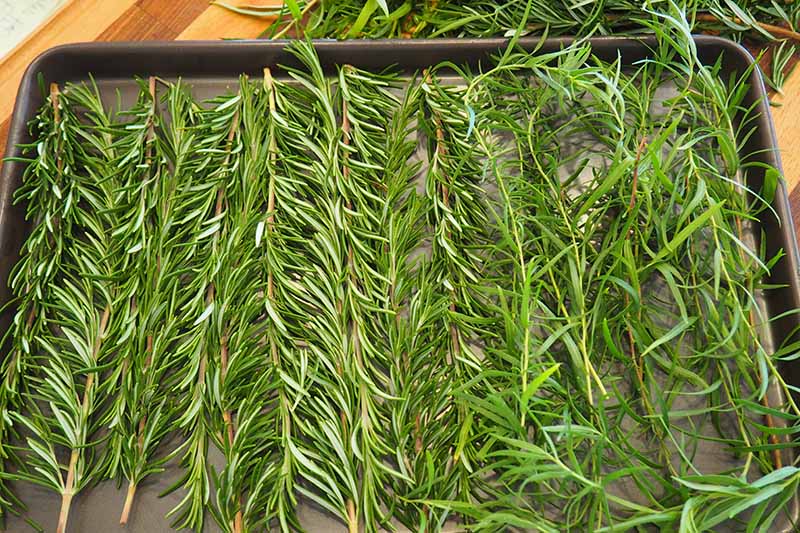
Cut clean, dry stems to about six inches long then place in a single layer on a baking sheet. Light, lacy leaves like tarragon can be allowed to overlap a bit.
Place in the freezer for a few hours, then transfer to airtight storage bags or containers. Label with the contents and date.

Remove individual sprigs as needed, and strip the leaves from the stems before use.
Rolled Logs
Soft, flat-leaf species such as basil, Italian parsley, or sage can be pressed and rolled into a log for more efficient bulk storage.
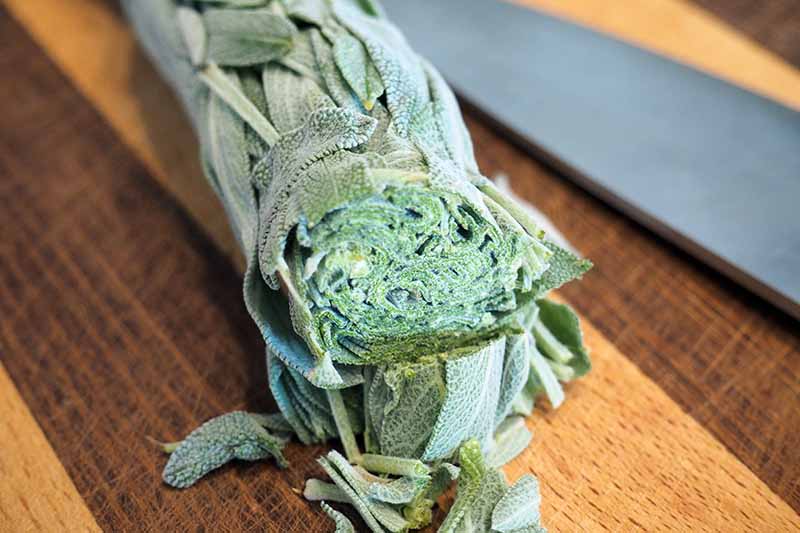
Remove clean and dry leaves from the stems and pack into a sealable bag.
Squeeze and tightly compress the leaves into a bundle along the bottom of the bag. Roll the bag around the bundled leaves, squeezing out air as you roll.
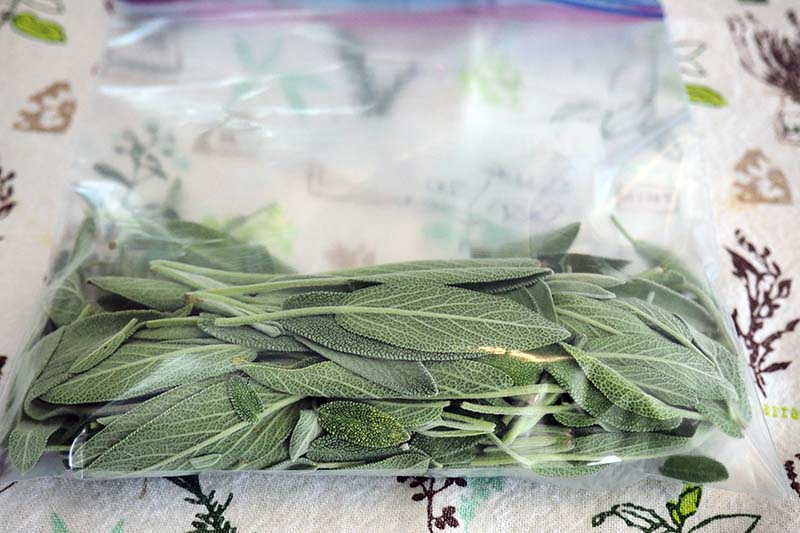
Seal the bag, label and date, then secure tightly with rubber bands before placing in the freezer.
When needed, slice quarter- or half-inch disks from the log.
Frozen for the Future
Start preserving your harvest whenever you have a surplus, and you’ll be well-stocked with your favorite herbs when summer ends – perfectly frozen for future use.
Ideal for adding flavor and fragrance to salad dressings, pasta dishes, sauces, soups, and stews, you’ll love their fresh taste when winter sets in!
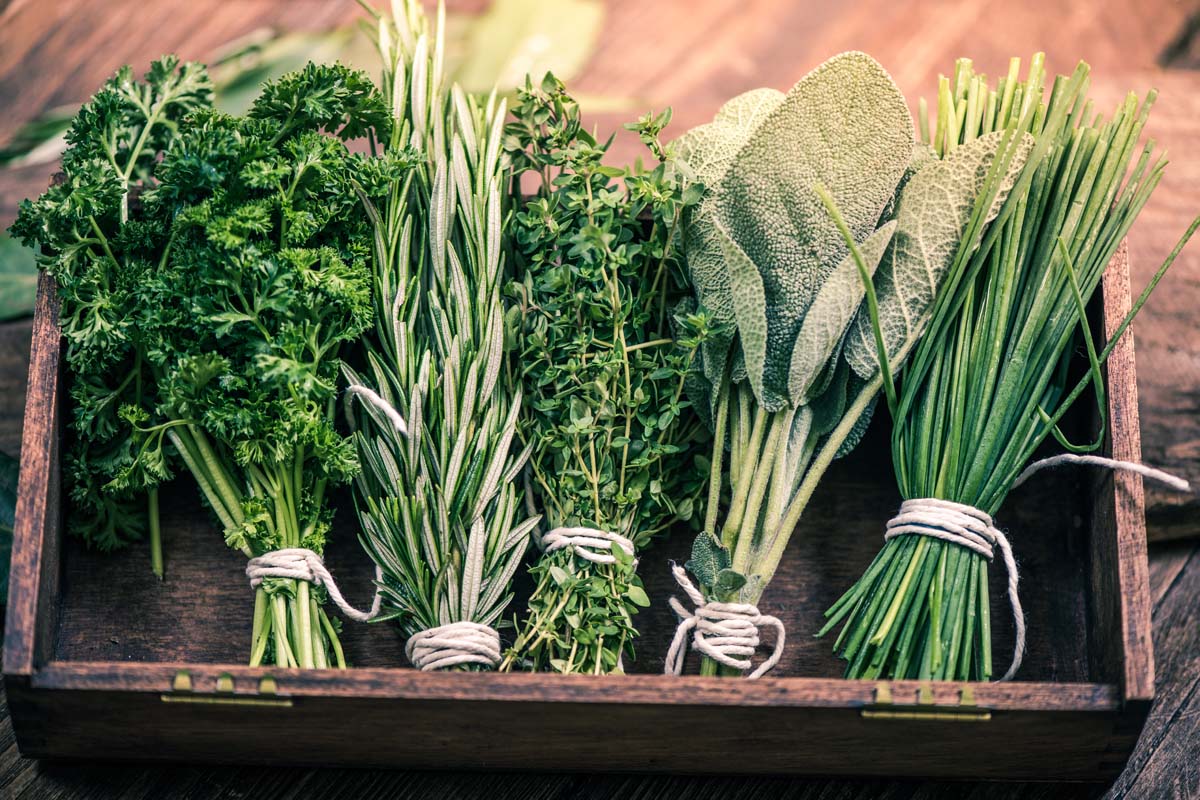
Do you folks have any favorite freezing techniques? Drop us a line in the comments below.
And if you like the idea of growing your own stockpile of herbs, be sure to read some of our growing guides next:
